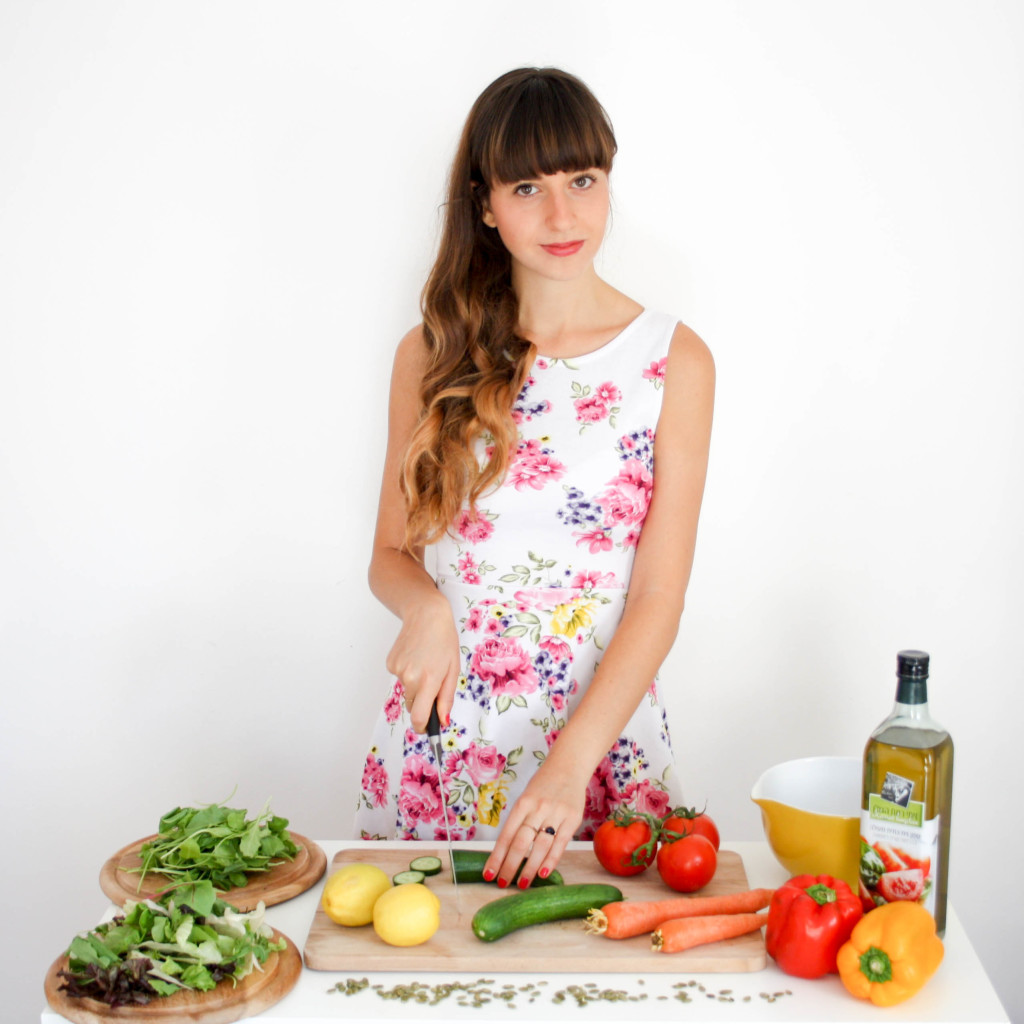The Disastrous Add-ons – 5 Salad Additions That Are Ruining Your Diet
We all had those mornings when the first thought after waking up was “I’m starting a diet”.
Usually this decision comes after a holiday with hearty meals, vacations and trips abroad, or even after you just exaggerated a bit and the guilt begins to tingle.
So what does it even mean when we say we’re “starting a diet tomorrow”?
For most of us, it means to cut back on fatty foods {pizza, hamburgers, cakes, pastries, etc.} and to start eating salad instead, and lots of it.
And then, amazingly after a week you worked very hard not to sneak a cookie in the office or a piece of chocolate at night and you feel so proud of yourself; you step on the scale and are disappointed to see that all of your self-restraint was for nothing – you didn’t even lose a gram!
So what’s preventing you from losing weight? After all, you tried so hard to watch what you eat, you stopped eating sweets and started eating salad three times a day.

> > The “add-ons” < <
You know exactly what I’m talking about – a few croutons here, a little cheese there… and suddenly, the supposedly slimming salad has calories equivalent to those of a hamburger {check the calorific value of salads sold at “Aroma” and you’ll understand exactly what I mean. And no, they do not include the bread they serve with the salad in this calculation..}
These are the things you have to stop adding to your salad, or at least reduce the quantities, if you want to lose weight :
1. Candied walnuts and almonds – Walnuts and almonds have healthy fats that help the body function properly, and are a great addition to salads in moderate amounts, but the calories shoot up once you decorate your salad with candied pecans, walnuts and almonds. Even though 30 grams of nuts that aren’t candied contain about one gram of sugar {less than one quarter of a teaspoon}, their candied friends can increase the amount of sugar in your salad by 10 grams {2 teaspoons!!} to 30 grams. One gram of sugar equals 4 calories, so this little add-on of candied nuts will raise the calorific value of your salad by at least 40 extra calories.
► Healthy alternative – Add a moderate amount of walnuts and almonds in their natural state, not roasted or candied, to save calories.
2. Cheeses – Many salads served in restaurants, even the ones that are defined as health salads, overflow with mounds of cheese. Avoid salads with fatty cheeses, like Haloumy {150 calories for 50 grams of cheese depending on frying} or parmesan {almost 200 calories for 50 grams of cheese}, and opt for cheeses that don’t exceed 5% fat.
► Healthy alternative – You don’t have to completely give up on the cheese; It’s also always important to ask what kind of cheese there is in the salad and the percentage of fat in the cheese it has, and you should always ask them to serve the cheese on the side so you could add smaller portions {yeah even those cheeses with low fat percentages}.
3. Mayonnaise based salad dressings – These salad dressings are the worst thing you could add to a salad, they have a very high calorific value largely due to the high percentage of fat hidden in them. Low-fat salad dressings also make your salad a high calorie meal since they have a lot of sugar and salt.
► Healthy alternative – Always try to add salad dressing yourself, in restaurants, too, using a small quantity of olive oil, lemon, balsamic vinegar and mustard. I you can’t completely give up on the salad dressing tastes, ask for a small amount on the side of the salad, and drizzle a little of it over the salad.
4. Olive Oil – Olive oil is considered by many as a healthy food, but it’s important to remember that excessive consumption could lead to weight gain and increased body fat. The calorific value of a tablespoon of olive oil is 88 calories, so if you add 2 tablespoons of olive oil – it’s like eating more than one pita! The problem is that most people don’t realize how much they use olive oil on a regular basis, and the road to gaining weight, in subcutaneous fat percentages and in BMI, is short.
► Healthy alternative – Olive oil has a large amount of oleic acid, is a monounsaturated fatty acid that contributes to reducing the “bad” cholesterol level, LDL, and increasing the “good” cholesterol, HDL. Therefore, the oil helps prevent heart diseases, blood diseases and other vascular problems, like atherosclerosis. In addition, this fatty acid helps lower high blood pressure, helps balance sugar levels in the blood, strengthens the immune system, and more. In addition, olive oil contains antioxidants that enhance the body’s defense against diseases (including cancer) and may possibly reduce physical “wear and tear” that is common with aging. Therefore, even though the calorific value is high, it’s good to add one tablespoon to your salad as part of the dressing.
5. Croutons – Although these tasty little cubes of baked bread add a lot of crunch to your salad, you should really cut them out since one tablespoon of croutons {and most salads have a lot more than that} contains about 100 calories.
► Healthy alternative – If you really can’t give up on the crunchiness, ask for the croutons on the side and slowly add them yourself as you eat the salad. If you’re eating at home, you should try making the croutons yourself from whole grain bread with a little olive oil spray and seasoning, this way you could reduce the amount of sodium that’s hidden in the industrial croutons and you’ll eat a whole carbohydrate.
Let me know if you also ruined your diet by using fattening add-ons
How do you like your salad? What are your favorite add-ons?












